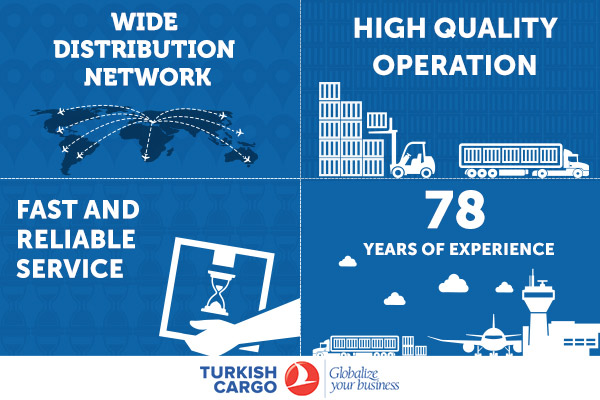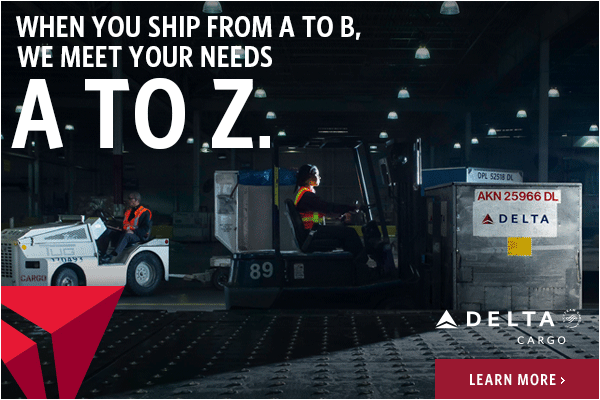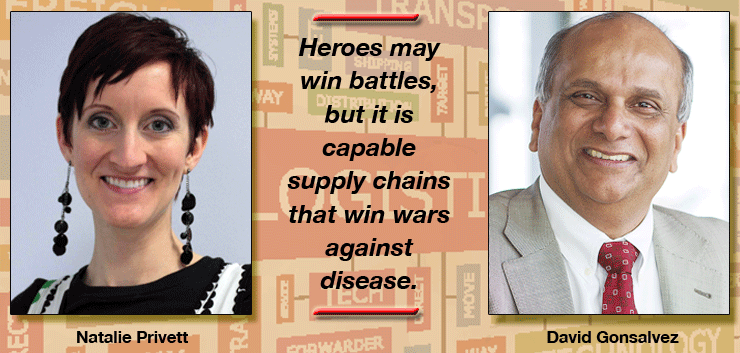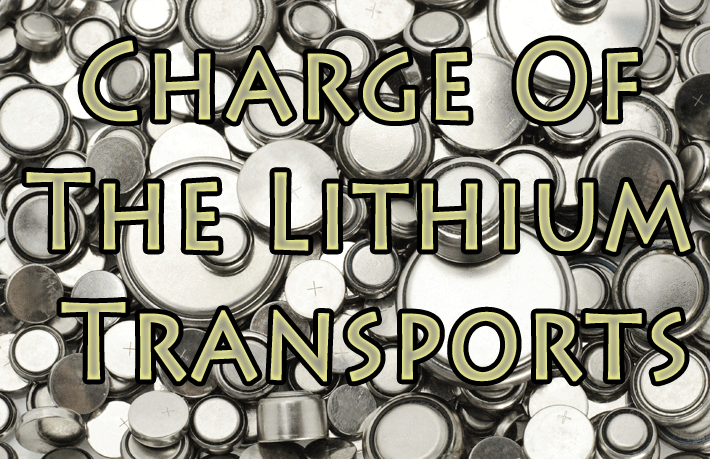 |
 |
 #INTHEAIREVERYWHERE |
| Vol. 14 No. 94 | Thursday
November 19, 2015 |
 |
When
talking Pharma, nearly everybody has a plan, a cooler,
a flight, or a better idea. The Air Freight industry
is always seeking supply chain solutions to serve the
health care business. But the air cargo industry may
have been given an important tool on the road to deeper
development into health care.
|
 |
As we continue our exclusive, in-depth coverage of
the never-ending story of Lithium Batteries and air
cargo, it should be noted that as recently as last
week, FT
wrote about the ICAO DGP's decision to essentially
not introduce further limitations regarding the transport
of lithium batteries.
SOC It To Me?
While it is an established fact that the SOC (State
Of Charge) has an effect on the danger presented by
Lithium-Ion and Lithium Polymer batteries in transport,
the bottom line of how much charge per unit is acceptable
seems to vary greatly depending on the exact chemistry
of the battery.
The 30% Factor
One thing, however, is agreed upon, and that is that
“one size fits all” solutions do not exist
when it comes to Lithium batteries solutions.
Different Strokes
When it comes to SOC in a lithium battery, in a typical
usage cycle a computer laptop battery, for example,
may be depleted after two hours instead of five and/or
become unusable after six months (instead of two years).
Degrees of Safety
Firstly, Lithium batteries generally tend to exhibit
poor performance in cold environments.
Reality Check Taking a momentary broader view reveals that Lithium shipments transiting airports are a fairly frequent scenario today and there have been no reports of heated batteries going up in flames, so maybe all these “what if” scenarios and other hasty conclusions are a bit premature.
Give One To PRBA
Given the lack of clear data surrounding the issue
of SOC, it is hard to argue with PRBA’s comment
that “PRBA believes it is premature to adopt
a state-of-charge limit on lithium-ion cells and batteries,
even as an interim measure.”
An IATA Secrecy Act?
After the voting within the ICAO DGP was leaked to
AP and subsequent reports questioned IATA positioning
itself against aircraft manufacturers, airline pilots,
and the state exporting most of the batteries in question
last month, an IATA spokesperson was quoted, saying: |
 |
|
One thing can be said for people in air cargo: they
know how to have a good time, and you could see the
good time they were having at Air Cargo Americas in
Miami.
If
you think it is easy to step into the shoes of a legendary
air cargo icon, we’re here to tell you that
it actually takes effort, patience, and also a fairly
thick skin.
Amongst all the suits in MIA we found the old cargo
pro John Ryan, one of the people responsible for building
the Virgin Atlantic Cargo brand in America.
CEO
of Airline Network Services, a new century GSSA based
near JFK International in New York, Jens Tubbesing
has built an impressive array of clients in the past
few years. |
 |
|
Publisher-Geoffrey
Arend • Managing Editor-Flossie Arend • Film Editor-Ralph Arend • Special Assignments-Sabiha Arend, Emily Arend • Advertising Sales-Judy Miller |
|













